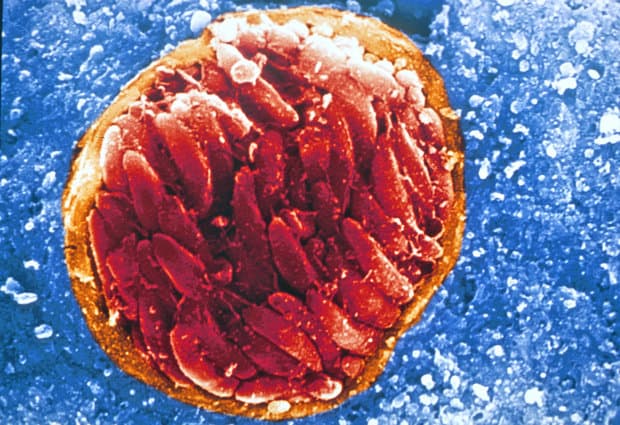International team describes step-by-step progress in battling toxoplasmosis

In the July 14 edition of Scientific Reports (Nature), 39 researchers from 14 leading institutions in the United States, United Kingdom and France suggest novel approaches that could hasten the development of better medications for people suffering from toxoplasmosis. This chronic, currently incurable infection, caused by the parasite Toxoplasma gondii, infects the brain and eye of as many as 2 billion people worldwide.
Their findings provide conceptual and practical roadmaps for improving the efficacy and reducing toxicity of available medicines. They also offer insights into the biology of T. gondii, suggest critical molecular targets for new medicines, and offer renewed hope for the speedy development of much-needed curative medicines for those with toxoplasmosis and potentially malaria.
The researchers describe three significant steps forward:
- They characterized a new experimental model, a Brazilian strain of gondii, called EGS, which behaves in tissue culture much like the dormant cystic parasites that live in human brain cells. This is "an immensely useful and important advance for medicine development," said the study's corresponding author Rima McLeod, professor of ophthalmology and visual sciences and of pediatrics at the University of Chicago. "It allows us to define its genotype and phenotype in depth and to identify what it does to its human host's blood and primary brain stem cells. Remarkably, this encysted parasite turns on host cell pathways in ways that can alter ribosomal function and cause mis-splicing of transcripts as well as other flaws associated with Alzheimer's and Parkinson's disease."
- The researchers found targets critical for the parasite's various life stages. Especially appealing was the parasite's mitochondrial protein, cytochrome b. The team was able to develop compounds more soluble than existing cytochrome b inhibiting quinolones. These can limit parasite survival, and have physiochemical properties commensurate with crossing the blood-brain barrier to treat central nervous system infections. This work emphasizes that the cytochrome bc 1 complex is a critical target. Co-crystallography of the enzyme with the inhibitor provides information to optimize inhibitory compounds.
- They show that greater understanding of gondii could have significant implications for anti-malarial research. Compounds they developed were highly effective against Plasmodium falciparum, the parasite that causes malaria, including all tested drug-resistant strains. Malaria, McLeod emphasized, "kills a child every eleven seconds."
A large data analysis by researchers at the University of Chicago, published June 26, 2016, in Clinical Infectious Diseases, found that the estimated annual incidence of toxoplasmosis over the last ten years in the US was 6,137 people, based on diagnostic codes for the disease. An editorial in that journal notes that these data "are the strongest to date to indicate that toxoplasmosis represents a significant disease burden in the United States."

